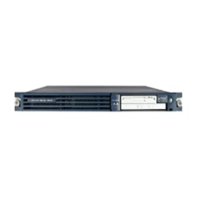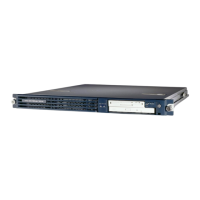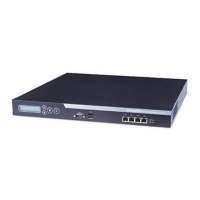5-77
Cisco Unified Communications Manager Managed Services Guide
OL-22523-01
Chapter 5 Cisco Unified Real-Time Monitoring Tool Tracing, PerfMon Counters, and Alerts
Cisco Intercompany Media Engine Performance Objects and Alerts
IME Server System Performance
The Cisco IME System Performance object provides information about performance on the Cisco IME
server. Table 5-62 contains information on the Cisco IME server system performance counters.
Table 5-62 IME Server System Performance
Counters Counter Description
QueueSignalsPresent 1-High This counter indicates the number of high-priority signals in the queue on the
Cisco IME server. High-priority signals include timeout events, internal
KeepAlive messages, internal process creation, and so on. A large number of
high-priority events causes degraded performance of the Cisco IME service
and results in slower or failed validations. Use this counter in conjunction with
the QueueSignalsProcessed 1-High counter to determine the processing delay
on the Cisco IME server.
QueueSignalsPresent 2-Normal This counter indicates the number of normal-priority signals in the queue on
the Cisco IME server. Normal-priority signals include call validations, IME
distributed cache operations such as stores and reads, and so on. A large
number of normal-priority events causes degraded performance of the Cisco
IME service and may result in slower or failed validations or disruption to IME
distributed cache connectivity. Use this counter in conjunction with the
QueueSignalsProcessed 2-Normal counter to determine the processing delay
on the Cisco IME server.
Since high-priority signal must complete before normal priority signals begin
to process, check the high-priority counters to accurately understand why a
delay occurs.
QueueSignalsPresent 3-Low This counter indicates the number of low-priority signals in the queue on the
Cisco IME server. Low-priority signals include IME distributed cache
signaling and other events. A large number of signals in this queue may disrupt
IME distributed cache connectivity or other events.
QueueSignalsPresent 4-Lowest This counter indicates the number of lowest-priority signals in the queue on the
Cisco IME server. A large number of signals in this queue may disrupt IME
distributed cache connectivity and other events.
QueueSignalsProcessed 1-High This counter indicates the number of high-priority signals that the Cisco IME
service processes for each one-second interval. Use this counter in conjunction
with the QueueSignalsPresent 1-High counter to determine the processing
delay for this queue.
QueueSignalsProcessed 2-Normal This counter indicates the number of normal-priority signals that the Cisco
IME service processes for each one-second interval. Use this counter in
conjunction with the QueueSignalsPresent 1-High counter to determine the
processing delay for this queue. High-priority signals are processed before
normal-priority signals.
QueueSignalsProcessed 3-Low This counter indicates the number of low-priority signals that the Cisco IME
service processes for each one-second interval. Use this counter in conjunction
with the QueueSignalsPresent 3-Low counter to determine the processing
delay for this queue.

